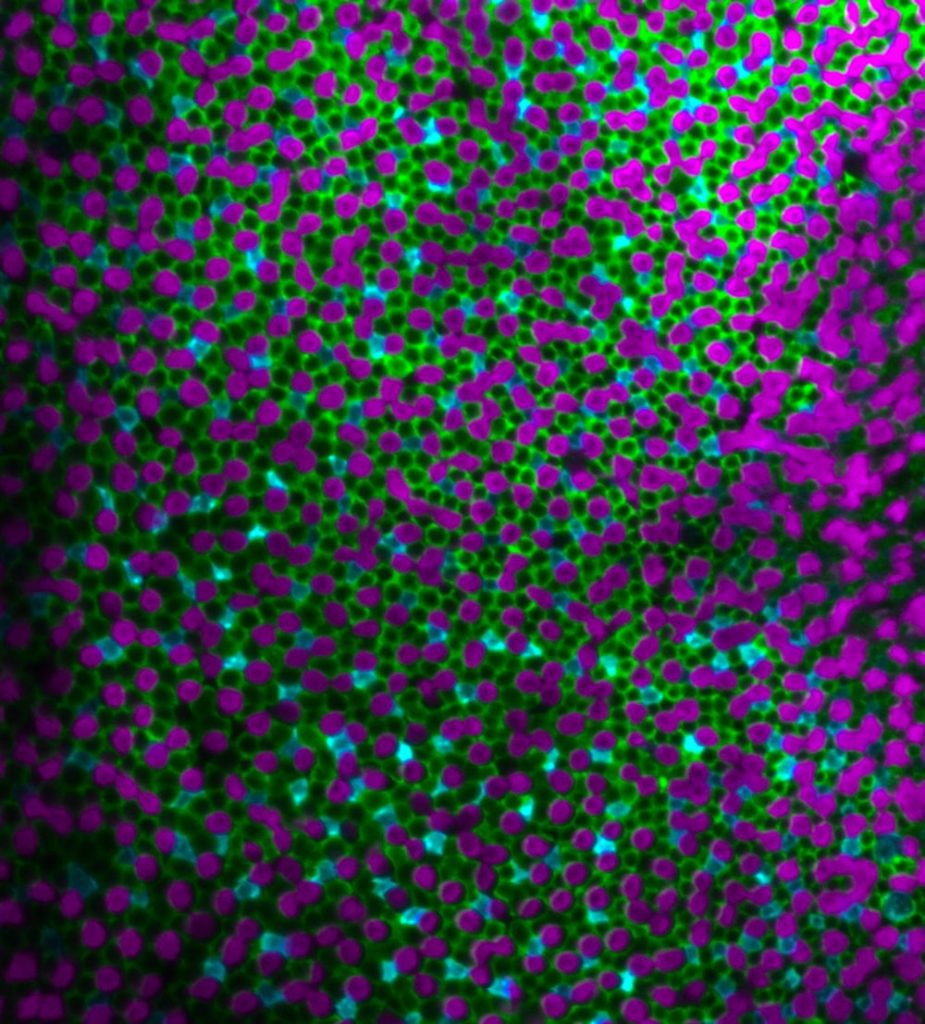Semifinalist / Special Recognition: This year’s judges would like to recognize this exceptional entry to the 2021 IOR Competition

| Submitted by: | Nicole Noel |
| Department: | Medical Sciences |
| Faculty: | Medicine & Dentistry |
Photoreceptors are the cells in the eye that detect light and convert light into signals that are transmitted to the brain, allowing for sight. I study how photoreceptor cells function as well as how they change during disease. Cone photoreceptors are specifically responsible for high acuity daytime and colour vision. As humans, we have cone photoreceptors that are sensitive to blue, green, and red light, allowing us to see those colours. This in an image of the cone photoreceptors in a larval zebrafish eye. In fact, this fish can see more colours than we can! Zebrafish have cone photoreceptors that are sensitive to ultraviolet, blue, green, and red light. These different cells are respectively coloured magenta, blue, and green in my image (red and green light sensitive cone photoreceptors are both labelled in green). Unfortunately, when cone photoreceptors degenerate due to disease, they cannot be replaced. Cone photoreceptor loss leads to irreversible vision loss, abnormal colour vision, and blindness. My work focuses on why these cells can become diseased and how we might combat inherited blinding conditions, using zebrafish as a model of high acuity colour vision.
